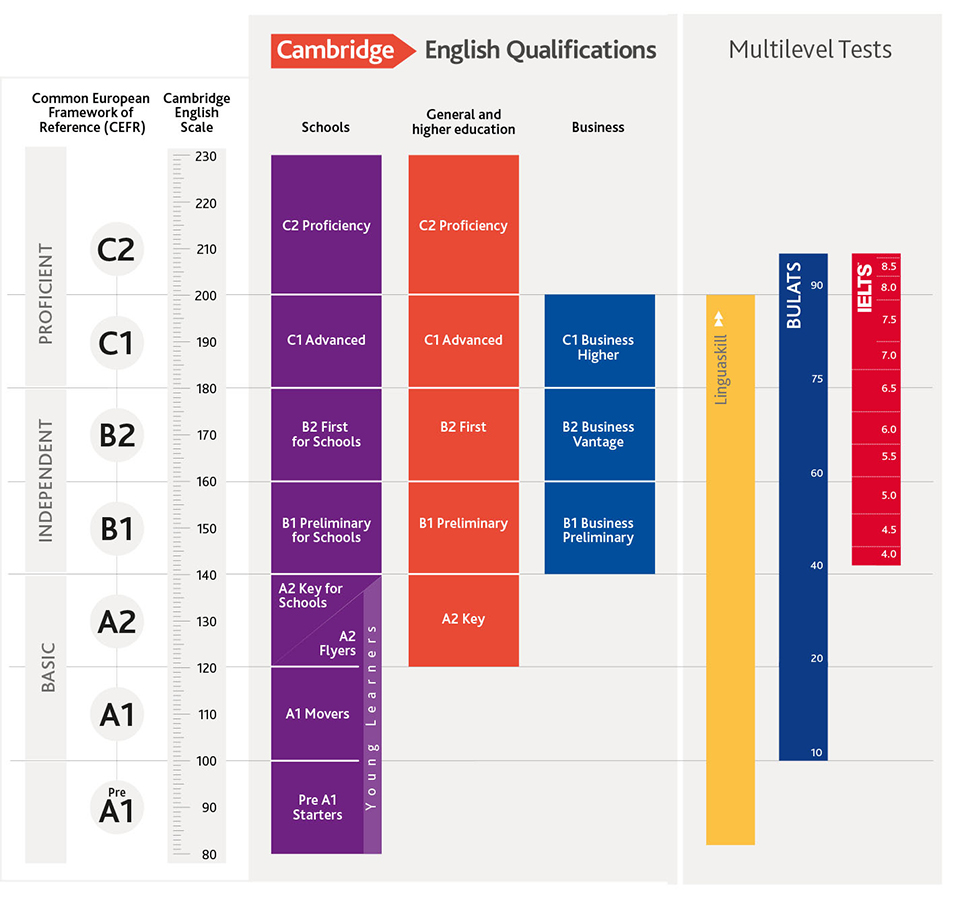CEFR in Thailand (Common European Framework of Reference for Languages)
Common European Framework of Reference for Languages (CEFR)
 The Common European Framework of Reference for Languages (CEFR) is an international standard for describing language ability on a six-point scale: the Basic User (levels A1 and A2), the Independent User (B1 and B2) and the Proficient User (C1 and C2).
The Common European Framework of Reference for Languages (CEFR) is an international standard for describing language ability on a six-point scale: the Basic User (levels A1 and A2), the Independent User (B1 and B2) and the Proficient User (C1 and C2).
The Thai Ministry of Education has set the following targets for Thai students:
- Primary 6 students (Prathom 6) should reach A1 proficiency
- Grade 9 students (Mathayom 3) should reach A2 proficiency
- Grade 12 students (Mathayom 6) should reach B1 proficiency
At Sriwittayapaknam School, we have set a higher standard. We want our Primary 3-4 students to be competent as A1 Movers and Primary 5-6 students to succeed as A2 Flyers.
![]()
CAN DO STATEMENTS AND SAMPLE EXAMS: Pre A1 Starters | A1 Movers | A2 Flyers | A2 Key for Schools
Download information: Handbook for Teachers | Handbook for Students and Parents | Word lists
![]()
Free Online Practice Tests and Exams for CEFR >>>
![]()
WHAT IS CEFR?
CAN DO STATEMENTS
Here are some things that students should practise doing to prepare for Pre A1 Starters, A1 Movers and A2 Flyers.
At all levels (Pre A1 Starters, A1 Movers and A2 Flyers) candidates need to be able to:
- understand the words on the word list for their exam
- spell the words on the word list correctly
- use present simple and continuous tenses (e.g. ‘I go’ and ‘I am going’)
- understand descriptions of people (what someone is doing, what they are wearing and what they look like)
- understand prepositions (for example, to understand where people and objects are in pictures)
- write words that are spelled for them and other words that they hear
- copy words to complete texts
- understand sentences that describe pictures and also speak about what they see in pictures
- follow colouring instructions
- ask and answer simple questions.
At Pre A1 Starters, they also need to be able to:
- look at some jumbled letters, and put them in order to make a word that matches a picture.
At A1 Movers and A2 Flyers, they also need to be able to:
- use past simple tenses (e.g. ‘I went’)
- talk about what is happening in a picture story
- talk about the differences between two pictures
At A2 Flyers, they also need to be able to:
- use the past continuous (e.g. ‘I was going’) and future forms (‘going to’ and ‘will’).
Source: Handbook for Teachers
![]()
CAN DO STATEMENTS AND SAMPLE EXAMS: Pre A1 Starters | A1 Movers | A2 Flyers | A2 Key for Schools
Download information: Handbook for Teachers | Handbook for Students and Parents | Word lists
![]()

![]()
Free Online Practice Tests and Exams for CEFR >>>
![]()





